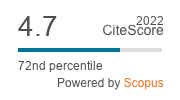Penicillium roqueforti produces mycotoxins including PR toxin, which is a food and feed contaminant. In this study, PR toxin was purified from culture material of the Penicillium roqueforti F43-1 strain. Toxic effects were evaluated in undifferentiated human Caco-2 intestinal epithelial cells and THP-1 monocytic immune cells. To understand the mechanisms involved in PR-toxin toxicity, cell death and pro-inflammatory gene expression were studied. In addition, PR toxin degradation was assessed. Cytotoxicity studies showed a dose-dependent effect of PR toxin and the calculated mean cytotoxic concentration (IC50) concentrations were for Caco-2 and THP-1 cells >12.5 and 0.83 μM, respectively. Gene expression studies showed that tumour necrosis factor-α expression was significantly increased after 24 h exposure to 312 μM PR toxin. PR toxin induced necrosis on THP-1 cells after 3 h exposure. In the cell culture system, the PR toxin showed a 10-fold reduction in PR toxin concentration within 48 h, indicating that PR toxin was degraded by THP-1. To conclude, PR toxin appears to be one of the most cytotoxic P. roqueforti mycotoxins on Caco-2 and/or THP-1 cells and induces in THP-1 cells both necrosis and an inflammatory response.
Effect of PR toxin on THP1 and Caco-2 cells: an in vitro study
N. Hymery Related information
1Université de Brest, EA 3882, Laboratoire Universitaire de Biodiversité et Ecologie Microbienne, IBSAM, ESIAB, Technopôle Brest-Iroise, 29280 Plouzané, France.
*Corresponding author: nolwenn.
, O. Puel Related information*Corresponding author: nolwenn.
2Toxalim (Research Centre in Food Toxicology), Université de Toulouse, INRA, ENVT, INP-Purpan, UPS, Toulouse, France.
, S. Tadrist Related information2Toxalim (Research Centre in Food Toxicology), Université de Toulouse, INRA, ENVT, INP-Purpan, UPS, Toulouse, France.
, C. Canlet Related information2Toxalim (Research Centre in Food Toxicology), Université de Toulouse, INRA, ENVT, INP-Purpan, UPS, Toulouse, France.
3MetaToul-MetaboHUB, National Infrastructure of Metabolomics and Fluxomics, 31027 Toulouse Cedex, France.
, H. Le Scouarnec Related information3MetaToul-MetaboHUB, National Infrastructure of Metabolomics and Fluxomics, 31027 Toulouse Cedex, France.
1Université de Brest, EA 3882, Laboratoire Universitaire de Biodiversité et Ecologie Microbienne, IBSAM, ESIAB, Technopôle Brest-Iroise, 29280 Plouzané, France.
, E. Coton Related information1Université de Brest, EA 3882, Laboratoire Universitaire de Biodiversité et Ecologie Microbienne, IBSAM, ESIAB, Technopôle Brest-Iroise, 29280 Plouzané, France.
, M. Coton Related information1Université de Brest, EA 3882, Laboratoire Universitaire de Biodiversité et Ecologie Microbienne, IBSAM, ESIAB, Technopôle Brest-Iroise, 29280 Plouzané, France.
Please note:
If you have attempted access to this content via the ‘Download PDF’ option available in ‘Site tools', and have been denied access to your licensed content, please try again via the ‘Full-text’ tab above.
Your Access Options
Log In
If you have personal access to this content, log in with your username and password here:
Log In
2023 Journal Impact Factor
2.0
source: Journal Impact Factor 2023™ from Clarivate™

Purchase Options
Institutional Offers
For institutional orders, please contact [email protected].



